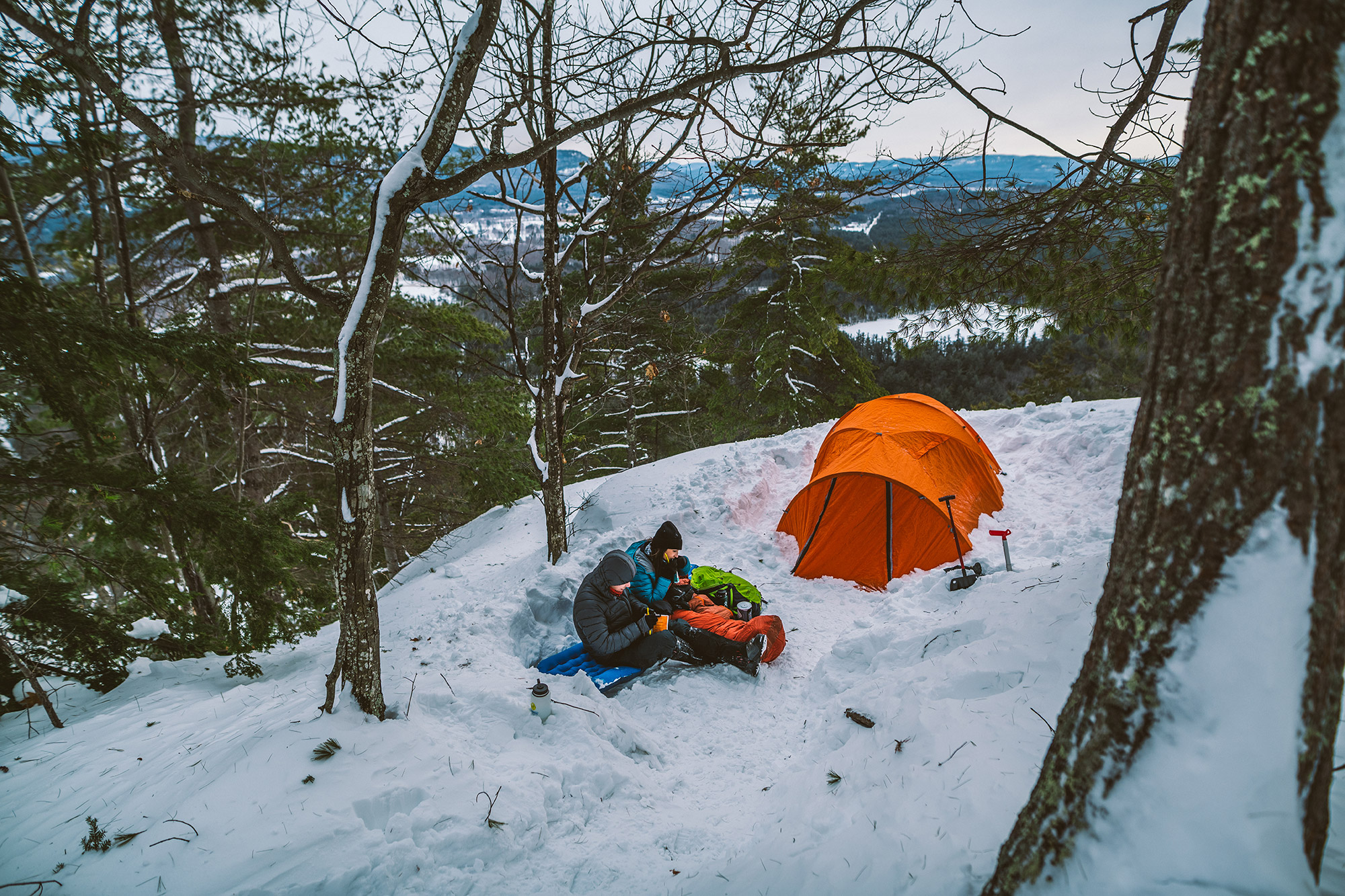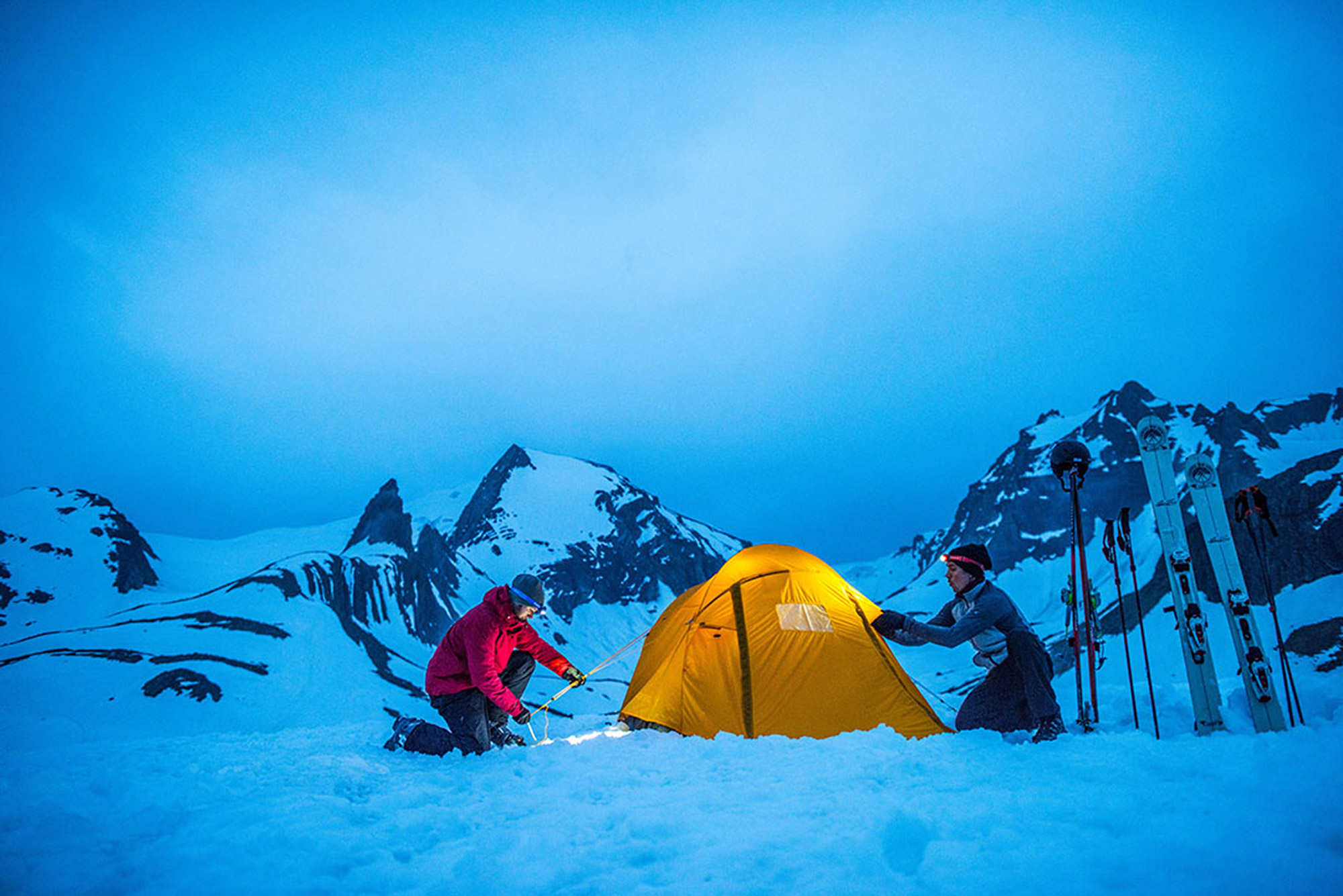All of those fun, multi-day trips into the mountains you did this past summer don’t need to stop just because of a little bit of snow. Backcountry camping in the winter is not only possible, it’s awesome. There are no bugs, way fewer people, and all of the roots and rocks you slept on in July are under a nice comfy snowpack in March. With the right gear and a little bit of planning ahead, you can get out there year round. But setting up camp in the snow is a little different than during the summer. Follow these steps to make sure your winter abode is comfortable.

1. Pick Your Spot
Just like the rest of the year, picking the right spot to pitch your tent is super important to ensuring a good—and safe—night outside. First thing first, read up on the local backcountry camping regulations to make sure your spot is legal. These guidelines vary from place to place, but generally mean keeping away from water sources, trails, established backcountry sites (like cabins, shelters and established campgrounds), and sensitive ecosystems.
Natural hazards are important considerations in three-season camping but are especially critical in winter. Stay far, far away from avalanche-prone areas and be mindful of wind and weather—do some research ahead of time and be aware of local conditions. If you’re in the woods, check out the surrounding trees to make sure you’re not in range of anything dead, broken, or otherwise ready to fall.
2. Make a Footprint
Once you’ve got a solid spot picked out, the first thing you want to do is pack down a footprint for the tent. Packed snow will melt slower and insulate better than loose powder and will make things a whole lot more comfortable. Keep your skis or snowshoes on and hop around in the spot you plan to set up until it forms a nice firm base.
Side note: Insulation is key to a comfortable night out in winter. An appropriately rated sleeping bag is a start, but bring an extra sleeping pad and you’ll be straight toasty.

3. Pitch the Tent
Next, pitch your tent just like you would any other time of year but for one small difference: the stakes. Your run-of-the-mill, three-season tent stakes are probably not going to do great in the snow, so a heavier duty option—like these—are a good way to go. Tying off and burying found objects—like gear, rocks, or fallen branches—is a good alternative too. A buried ice axe makes a solid anchor and keeps those sharp edges away from ripping a real bummer of a hole in your tent.
Provided the weather reports aren’t grim, a three-season tent can be totally workable in winter. The big difference between winter and three-season tents are stronger poles (for snow accumulation) and sturdier fabric (for wind resistance). If the forecast is clear of heavy snow or high winds, you’re golden. Just lash down that rainfly right so the cold air doesn’t creep in.

4. Use the Snow
The coolest thing about winter camping is that, with the snow, you can really go to town customizing your site to fit your needs. If you need a bit more space for gear you can dig out your tent’s vestibule and stash it there. If the wind is crazy you can build a snow wall and keep yourself in the lee.
5. Break it Down
Before heading out it’s important to make sure you’ve broken down your site in the most Leave No Trace way possible. Break down or fill in those cool man-made features and always pack out what you pack in.
Do you have any other suggestions for setting up camp in the snow? Leave them in the comments!
John Lepak
John Lepak is an art director, graphic designer, and weekend mountaineer. He hasn’t met a rock scramble he didn’t like, and spends his free time either in the mountains or obsessively cooking Mexican food. When John isn’t pushing pixels, crushing miles, or making the best carnitas caseras you’ve ever tasted, you can find him living the dream in the Connecticut woods with his family. Follow him at @jhlepak.
Related Posts
April 2, 2024
10 Tips for Mountain Biking Etiquette During Mud Season
One rough spring could ruin the…




